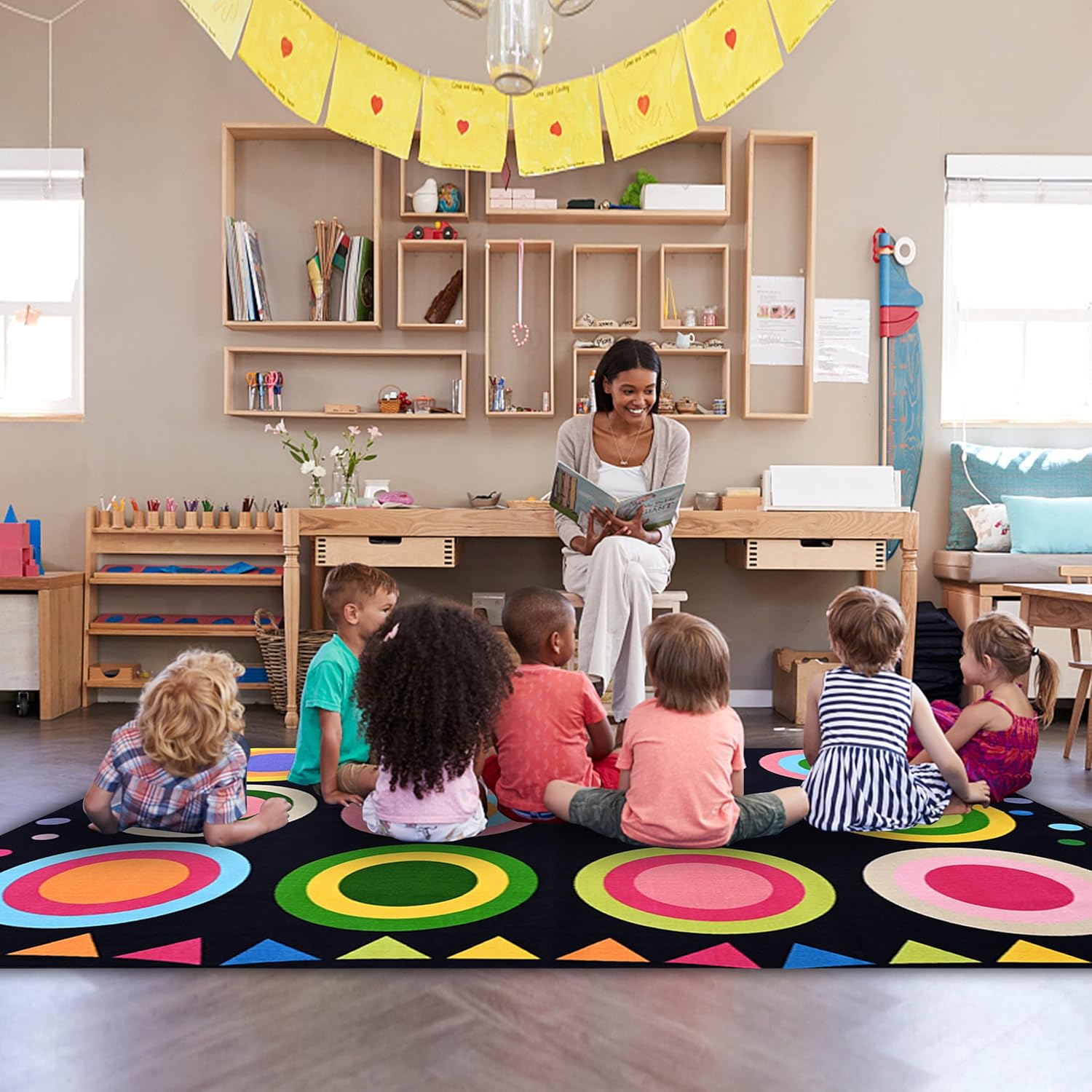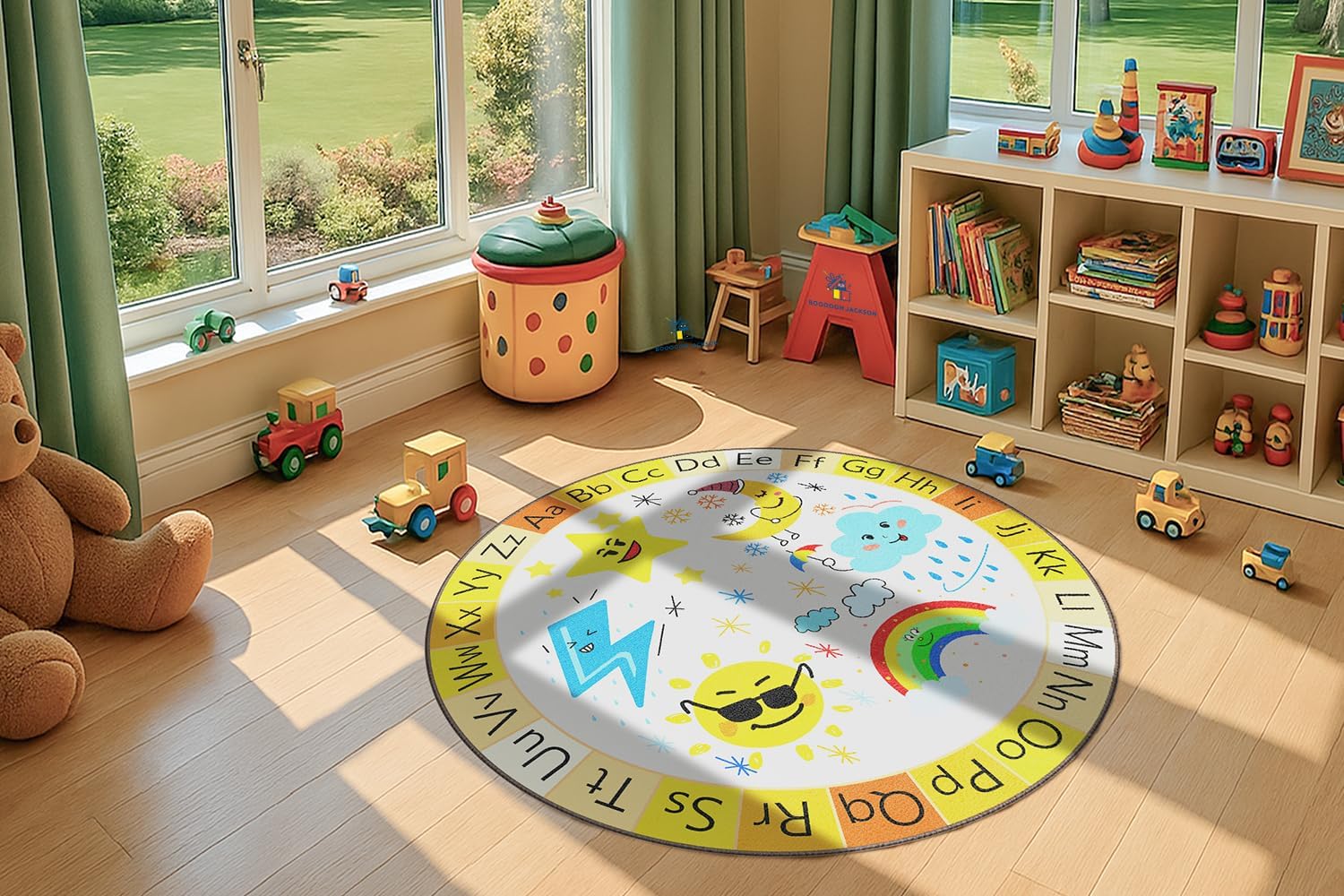The physical layout of a classroom is a powerful but often overlooked teaching tool. At Booooom Jackson, we've found that thoughtfully designed learning spaces can dramatically improve student engagement, behavior, and academic outcomes. Creating distinct functional zones using carpets and furniture is one of the most effective and accessible ways for teachers to optimize their classroom environment.
Understanding Learning Zone Psychology
Research consistently shows that classroom arrangements significantly impact student learning. According to Edutopia, well-defined learning zones help students:
- Understand behavioral expectations for different activities
- Navigate transitions more effectively
- Regulate their sensory input
- Develop autonomy in selecting appropriate work spaces
- Engage more deeply with learning materials
The physical cues provided by different flooring materials and furniture arrangements help students unconsciously adapt their behavior to match the intended purpose of each space.
Key Functional Areas Every Classroom Needs
Modern, effective classrooms typically include several distinct zones to support different types of learning activities:
1. Whole Group Instruction Area
A space where the entire class can gather comfortably for direct instruction, discussions, or community-building activities.
2. Small Group Collaboration Stations
Dedicated areas where 4-6 students can work together on projects or receive guided instruction.
3. Independent Work Zones
Quieter spaces designed for focused individual work with minimal distractions.
4. Reading Corner
A comfortable, inviting area that encourages literacy and provides space for both independent and guided reading.
5. Hands-on Learning Center
A space equipped for experiential learning activities, such as science experiments or art projects.
6. Calming/Reflection Space
A low-stimulation area where students can self-regulate when feeling overwhelmed.
Using Carpets as Space Definers
Carpets and rugs are powerful tools for classroom organization, offering both practical and psychological benefits. According to We Are Teachers blog, carpets serve multiple functions in defining learning zones:
Visual Boundaries
Area rugs create clear visual demarcation without physical barriers, helping students understand where one activity space ends and another begins.
Acoustic Management
Carpeted areas naturally absorb sound, making them ideal for reading corners or small group work where noise control is important.
Comfort Signaling
Soft floor coverings signal that a space is designed for comfort and extended sitting or floor-based activities.
Practical Tips for Carpet Placement:
- Use color psychology - Calming blues and greens work well for quiet areas, while warmer colors can energize collaborative spaces
- Consider size and scale - Ensure carpets are proportional to both the room and the number of students who will use the space
- Mind the traffic flow - Position carpets to define spaces without disrupting necessary pathways through the classroom
- Think about durability - Select easy-to-clean materials for areas prone to spills or heavy use
- Add interest with shapes - Circular rugs naturally encourage face-to-face interaction in discussion spaces
Strategic Furniture Placement
Furniture arrangement works in tandem with floor coverings to define functional areas. According to The Wikipedia article on Learning Spaces, purposeful furniture configuration significantly impacts student behavior and learning outcomes.
Natural Dividers
Bookshelves, storage units, and display boards serve as excellent room dividers because they:
- Create visual and physical boundaries between zones
- Provide accessible storage for materials specific to each area
- Maintain sight lines for supervision while still defining distinct spaces
- Can be arranged in various configurations to create semi-enclosed areas
Seating Considerations
Different types of seating communicate different expectations:
- Desks arranged in pods support collaborative group work
- Floor cushions create informal reading or discussion spaces
- Standing workstations encourage active engagement for certain tasks
- Individual carrels support focused independent work
- Flexible seating options allow students to select positions that help them learn best
Fixed vs. Mobile Elements
As noted by educational design experts at Cult of Pedagogy, an effective classroom typically includes:
- Fixed elements (15-20% of the space) that remain constant throughout the year
- Flexible elements (80-85%) that can be reconfigured based on changing instructional needs
Mobile furniture on casters allows for quick transitions between different classroom arrangements, which is especially valuable for teachers who need to accommodate various learning activities throughout the day.
Layout Plans and Templates
Here are specific layout plans for key functional areas that combine carpets and furniture effectively:
Reading Corner Layout
Purpose: To create a comfortable, inviting space that encourages literacy and provides a retreat for quiet reading.
Essential Elements:
- A soft 6×8 foot carpet in a calming color
- Bookshelf positioned to create a partial boundary
- Varied seating options (floor cushions, beanbags, small chairs)
- Good lighting (preferably natural light plus a lamp)
- Book display facing outward to showcase covers
Layout Tips:
- Position in a quiet corner away from high-traffic areas
- Use a bookshelf as a sound buffer from noisier zones
- Include a teacher chair for read-aloud sessions
- Consider adding a canopy or tent-like structure for coziness
- Keep books accessible and organized by reading level or topic
Small Group Discussion Area
Purpose: To facilitate collaborative work and discussion while containing sound.
Essential Elements:
- Circular carpet (5-6 foot diameter)
- Seating for 4-6 students arranged in a circle
- Small central table or clipboard storage
- Portable whiteboard or chart paper
- Storage for discussion prompts and materials
Layout Tips:
- Position semi-centrally but away from quiet independent work areas
- Ensure the teacher can observe the group from multiple positions in the room
- Consider using a slightly raised carpet to further define the space
- Include a "materials manager" station with supplies needed for group work
- Use furniture to create a partial sound barrier if needed
Whole-Class Meeting Area
Purpose: To gather all students for direct instruction, morning meetings, or community building.
Essential Elements:
- Large rectangular or oval carpet
- Clear sightlines to main instructional board/screen
- Teacher chair or stool
- Document camera or demonstration table
- Nearby storage for frequently used instructional materials
Layout Tips:
- Position near the main instructional wall but allow sufficient space
- Ensure the carpet is large enough for all students to sit comfortably
- Consider using carpet squares that can be rearranged as needed
- Keep clear of doorways and other high-traffic pathways
- Use visual cues to mark individual sitting spots if needed
Independent Work Zones
Purpose: To provide spaces for focused individual work with minimal distractions.
Essential Elements:
- Individual desks or tables facing away from high-activity areas
- Partial dividers or study carrels as needed
- Headphone station for audio learners
- Task lighting
- Supply caddies with essential materials
Layout Tips:
- Position along classroom perimeter when possible
- Use bookshelves or mobile dividers to separate from noisier areas
- Provide varied seating options (standard chairs, stability balls, standing desks)
- Consider small area rugs under each station to absorb sound
- Include visual reminders of quiet expectations
At Booooom Jackson, we've found that creating a simple diagram of your classroom layout before moving heavy furniture can save time and effort!
Implementation on Any Budget
Creating well-defined classroom zones doesn't require expensive specialized furniture or materials. The Education Week Teacher blog suggests these budget-friendly approaches:
No-Cost Solutions:
- Rearrange existing furniture more strategically
- Use colored masking tape to define areas on existing flooring
- Repurpose cardboard boxes as dividers or storage
- Create "zones" through clear visual labels and signs
- Establish different lighting patterns for different areas (natural light, lamps off/on)
Low-Cost Solutions:
- Purchase area rugs from discount home stores
- Source second-hand furniture from community donations
- Use tension rods and curtains as flexible dividers
- Create DIY floor cushions from old pillows
- Use shower curtains as affordable carpet alternatives
Investment Pieces (If Budget Allows):
- Mobile storage units on casters
- Flexible seating options that can be used in multiple zones
- One high-quality area rug for your most-used gathering space
- Folding room dividers
- Adjustable-height tables
Measuring Space Effectiveness
How do you know if your classroom zoning is working? According to the Teacher Vision blog, look for these indicators:
- Transition time decreases - Students move efficiently between activities
- Noise levels self-regulate - Different areas naturally develop appropriate volume levels
- Student independence increases - Learners select appropriate work spaces without prompting
- Behavior incidents decrease - Clearly defined spaces lead to clearer behavioral expectations
- Engagement deepens - Students spend more time on-task in well-designed spaces
- Teacher proximity becomes more strategic - You can position yourself where most needed
Consider documenting these patterns before and after implementing your new classroom design to measure impact.
Conclusion
Thoughtful classroom design using carpets and furniture as zone definers isn't just about aesthetics—it's about creating an environment that actively supports teaching and learning. By creating distinct functional areas, educators provide students with environmental cues that support different learning modes, encourage appropriate behaviors, and foster both independence and collaboration.
At Booooom Jackson, we believe that physical environment is a powerful teaching tool that often goes underutilized. By investing time in strategic classroom layout, teachers can create spaces that work with them rather than against them in achieving educational goals.
We'd love to see how you've transformed your classroom spaces! Share your before-and-after photos or innovative design solutions in the comments below.








Leave a comment
This site is protected by hCaptcha and the hCaptcha Privacy Policy and Terms of Service apply.